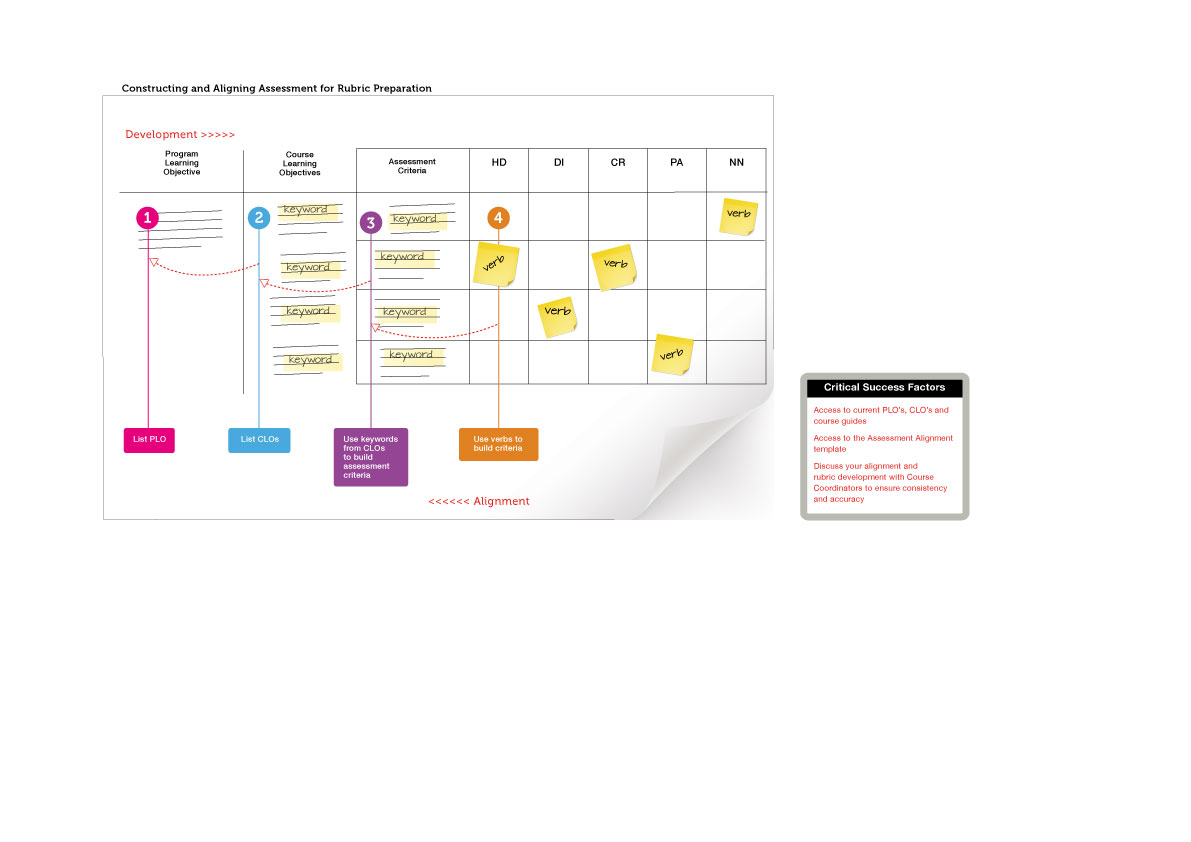Constructive Alignment for Rubric Preparation
Design Pattern Tags : Assessment (including formative/summative design)
Constructive Alignment for Rubric Preparation May 2016
Abstract/Snapshot:
The implementation of a solid pedagogical process of alignment and rubric construction will improve quality of assessment and marking. This pattern highlights the process undertaken when aligning PLOs,CLOs and assessment criteria to inform assessment rubrics.
Learning Context This pattern has been established to support teaching and coordination team professional development. It is suitable for all levels of teaching staff to build capability in assessment methodology. Any alignment and rubric construction should not be done in isolation, therefore this pattern is suitable for small to medium teams.
Rationale By aligning PLOs, CLOs and assessment criteria, the overall quality of course offerings will be raised to meet and exceed the current standards from external accrediting bodies and industry.
Learning Design Teaching staff will build their capabilities by:
Constructively aligning PLOs with CLOs to inform correct use of Rubric language
Aligning assessment criteria to CLOs to cover the PLOs entirely
Mapping assessment types used across courses and where they support the assessment outcome.
The Process:
Watch assessment alignment animation (attached) for brief overview
Ensure you have your approved program learning objective of the course ready
Ensure you have your approved course learning objectives of the course ready
Have access to the assessment alignment template (provided)
Write the program learning objective into the assessment alignment template in the space provided.
In each of the course learning objectives, summarize by pulling out keywords from the the course learning objectives and list them in the course learning objectives section of the assessment alignment template
Read the program learning objective statement and ensure the statement supports the course learning objectives as a definition.
Identify one of your assessments and the type of assessment being used in the course and write in the template
List the learning criteria of the assessment in the template
Read the learning criteria and compare it along side of the Course learning objectives to make sure it is all aligned
NOTE : You can refer back to the full course learning objective statements if you need to.
Conditions/Critical Success Factors Access to current PLO’s, CLO’s and course guides
Access to the Assessment Alignment template
Discuss your alignment and rubric development with Course Coordinators to ensure consistency and accuracy
Case Studies/Implementation Following this pattern, it is recommended to also refer to ‘Building Assessment Rubrics from Scratch ’ pattern to complete the assessment cycle.
Outcomes This process and its associated resources will provides teaching teams with the skills and knowledge to effectively write clear assessment criteria and develop assessment rubrics. When implemented correctly it will Improve marking objectivity, consistency and efficiency, both across different standards and across student cohorts. It will provide students with a well rounded learning experience as they expected when enrolling in the course.
Related Media

